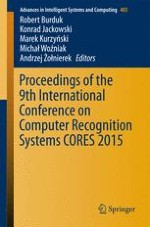The computer recognition systems are nowadays one of the most promising directions in artificial intelligence. This book is the most comprehensive study of this field. It contains a collection of 79 carefully selected articles contributed by experts of pattern recognition. It reports on current research with respect to both methodology and applications. In particular, it includes the following sections:
Features, learning, and classifiers Biometrics Data Stream Classification and Big Data Analytics Image processing and computer vision Medical applications Applications RGB-D perception: recent developments and applications
This book is a great reference tool for scientists who deal with the problems of designing computer pattern recognition systems. Its target readers can be the as well researchers as students of computer science, artificial intelligence or robotics.
